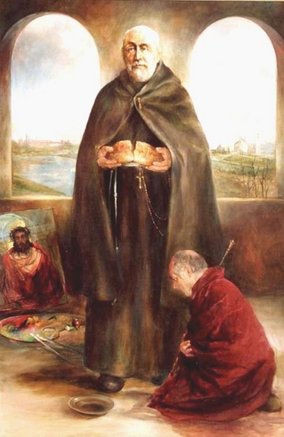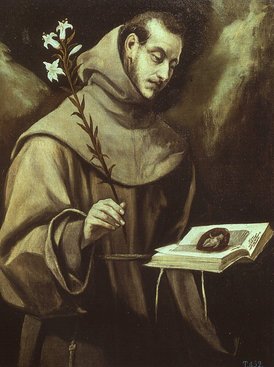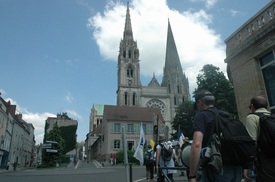Monthly St Gianna Mass at St Catherine of Siena Church, New York: June 17
On Thursday, June 17, there will be a St Gianna Mass celebrated for the intentions of couples dealing with infertility issues at St Catherine of Siena Church (411 East 68th Street, New York).
All are welcome!
The program for the evening is as follows:
6:00 pm: Adoration of the Blessed Sacrament and Confessions
6:25
pm: Litany and Prayers to Saint Gianna
6:35 pm: Mass
7:30 pm: Infertility
Support Group and talk by Dr. Anne Melnik on Napro – Technology
The celebrant of the Mass and devotions will be Dominican Father Bruno Shah.
The St Gianna Mass will be celebrated on the 3rd Thursday of each month. This Mass and program is a natural outgrowth of the spiritual activities held in May for the blessing and public inauguration of the Gianna healthcare ministry working infertility and women’s health.
Mark your calendar for the monthly St Gianna Mass:
July 15, August 19, September 16, October 21, November 18, December 16,
The St Gianna Mass is host by the Dominican Friars of St Catherine of Siena Church & Priory in close collaboration with the Dominican Friars Healthcare Ministry of NY and the Gianna Center.
Damien Anthony Daprai, OSB, RIP
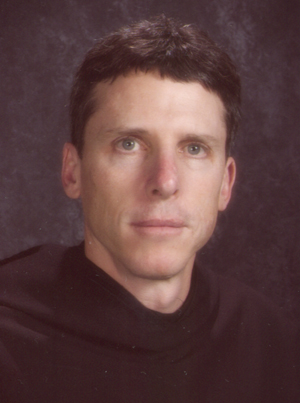 Your prayers are kindly requested today for the peaceful repose of Father Damien Anthony Daprai, OSB, 47, who is being laid to rest today. He died suddenly Friday morning during his morning job around his abbey’s property. Father Damien was a monk of Marmion Abbey.
Your prayers are kindly requested today for the peaceful repose of Father Damien Anthony Daprai, OSB, 47, who is being laid to rest today. He died suddenly Friday morning during his morning job around his abbey’s property. Father Damien was a monk of Marmion Abbey.
Ever since learning of Father Damien’s death mid-Friday morning I’ve been thinking of him and the loss experienced by many. He is the second friend to die this year of a heart attack at the same age!!!
Of the many reasons for sympathy for Damien’s death is his youthfulness and his faithful friendship. Many would give witness to this fact!!! He was committed to the monastic way of life according to the Rule Saint Benedict having made his solemn profession in 2007. When he entered Marmion Abbey he received the name Damien in honor of Blessed –now Saint– Damien de Veuster of Molokai. Likewise, he was a new priest of Jesus Christ having been ordained only two years ago. Father Damien’s death happened on one of the greatest solemnities the Church observes: the Sacred Heart of Jesus. There are only a few days which would be better to die than on the Sacred Heart’s feast, if one had the choice.
Last evening the monastic community and Damien’s family received his body at the Abbey for a visitation and to pray the Office of the Dead. This morning Abbot Vincent de Paul will celebrate the Mass of Christian Burial for Damien in the Abbey Church of Saint Augustine of Canterbury. Burial is in the abbey cemetery.
No Islamic worship in former mosque, bishop says
 Euronews reported today that the bishop of Córdoba, Bishop Demetrio Fernández González made a decision not allow Muslim worship in a former mosque in what is today a Roman Catholic Cathedral. I believe that Bishop Demetrio made a correct and prudent decision here.
Euronews reported today that the bishop of Córdoba, Bishop Demetrio Fernández González made a decision not allow Muslim worship in a former mosque in what is today a Roman Catholic Cathedral. I believe that Bishop Demetrio made a correct and prudent decision here.

Spanish city of Córdoba, once the seat of Muslim power in Spain, said that he
will not permit Islamic worship at the city’s cathedral. The cathedral was
formerly a mosque, which in turn had been built on the site of a Catholic
church.
an interview, “is a euphemism which means: get Catholics out of here … The
answer to the question about sharing the Cathedral is that no, we’re not,
because this place has been a Catholic church 16 centuries, while Muslims have
been four and half centuries.”
cathedral of Cordoba, it is equivalent to Catholics saying goodbye and good
night; it would be irresponsible,” he added. “There are things that are
shared and others that are not, and the cathedral of Cordoba is not shared with
Muslims (…)”
Flag Day
 Flag Day is celebrated every June 14, in commemoration of the June 14, 1777 authorization by Congress making the “stars and stripes” a national symbol for the United States of America. Congress said: “Resolved that the flag of the thirteen United States be Thirteen stripes alternate red and white: that the union be thirteen stars, white in a blue field, representing a new constellation.” The national observance of flag day came with President Woodrow Wilson’s 1916 proclamation establishing the day. In 1949, President Harry Truman signed an Act of Congress naming June 14 as “National Flag Day.” More info can be found here.
Flag Day is celebrated every June 14, in commemoration of the June 14, 1777 authorization by Congress making the “stars and stripes” a national symbol for the United States of America. Congress said: “Resolved that the flag of the thirteen United States be Thirteen stripes alternate red and white: that the union be thirteen stars, white in a blue field, representing a new constellation.” The national observance of flag day came with President Woodrow Wilson’s 1916 proclamation establishing the day. In 1949, President Harry Truman signed an Act of Congress naming June 14 as “National Flag Day.” More info can be found here.
Blessing of Lilies on the Feast of Saint Anthony of Padua
V. Our help is in the name of the Lord.
R. Who made heaven and earth.
V. The Lord be with you.
R. And with your spirit.
O God, the Creator and Preserver of mankind, thou Who art the lover of holy purity, the giver of spiritual grace, the dispenser of eternal salvation, bless + these lilies we bring on this day in thanksgiving to thee and in honor of Saint Anthony, thy Confessor. Pour out on them heavenly dew by the saving + sign of the most holy cross, O God of love! Thou hast endowed these lilies with delicious fragrance to be a comfort and help to those on their sickbeds. Wherefore, imbue them with so great strength that whether they are used in a home, in a sickroom, or carried about one’s person, they may have power, through the intercession of Saint Anthony, to drive out evil spirits, to safeguard chastity, to turn away illness, and to bestow on thy servants peace and grace.
V. Pray for us, blessed Anthony.
R. That we may be made worthy of the promises of Christ.
May the devout and constant intercession of Blessed Anthony, thy Confessor, come to our aid, we beseech thee, O Lord, that we may become of thy grace in this life, and merit everlasting joys in the next.
Saint Anthony of Padua
Loving God, upon this day
Sing we all in joyful praise:
Anthony, your faithful son,
On this day has heaven won.
He, the preacher of the Word,
Lived in deed the truth he heard;
Called by martyr’s death to be
Vowed to holy poverty.
Lord, accept the hymns we raise,
Singing Anthony’s holy praise!
Faithful friar, in Francis’ step
Bids us go where he has led,
Drawn by him, we offer laud
To Christ Jesus, Son of God.
Fearless teacher of the way,
Guiding us to work and pray,
Through his never-ceasing prayer
Leads us Christ-ward ev’rywhere.
Lord, accept the hymns we raise,
Singing Anthony’s holy praise!
To the Father and the Son
And the Spirit, Three-in-One,
Hymns of glory, songs of love
Sing we, echoing those above.
With the angels’ chorus high
Earth now makes this joyful cry;
With Saint Anthony we sing,
Praising God, our heav’nly King.
Lord, accept the hymns we raise,
Singing Anthony’s holy praise!
J. Michael Thompson
Copyright © 2010, World Library Publications
77 77 D; MENDELSSOHN, (or, without refrain, SALZBURG)
Pilgrimage to Chartres
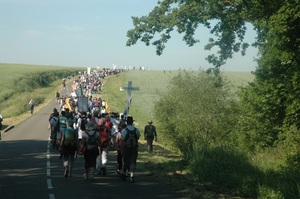 Going from point A to point B whether it is a physical move or a spiritual one is a pilgrimage. Something happens to the person making the move between points. Traditionally speaking a pilgrimage is not a tourist event nor is a undertaken for frivolous reasons. Tourism is fine and necessary but I want to think about a different type physical and spiritual journey not often talked about in Catholic circles today. It is a journey; it’s a path walked; it is a time to review your life. A pilgrimage is time spent either alone or with others on a path to a change of heart, a conversion. Often we take on the burdens and the delights of a pilgrimage to gain a deeper insight into our lives as Christians asking questions about how the experience of Christ has changed me, or where I need to change based on what I discern the Lord to be asking.
Going from point A to point B whether it is a physical move or a spiritual one is a pilgrimage. Something happens to the person making the move between points. Traditionally speaking a pilgrimage is not a tourist event nor is a undertaken for frivolous reasons. Tourism is fine and necessary but I want to think about a different type physical and spiritual journey not often talked about in Catholic circles today. It is a journey; it’s a path walked; it is a time to review your life. A pilgrimage is time spent either alone or with others on a path to a change of heart, a conversion. Often we take on the burdens and the delights of a pilgrimage to gain a deeper insight into our lives as Christians asking questions about how the experience of Christ has changed me, or where I need to change based on what I discern the Lord to be asking.
Blessed Florida Cevoli and Blessed Jolenta of Poland
Lord, my allotted portion and my cup, it is You who hold fast my lot. For me the measuring lines have fallen on pleasant sites; fair indeed is my inheritance.
Immaculate Heart of Mary
O Most Blessed Mother, heart of love, heart of mercy, ever
listening, caring, consoling, hear our prayer. As your children, we implore
your intercession with Jesus your Son. Receive with understanding and
compassion the petitions we place before you today, especially …(special
intention).
We are comforted in knowing your heart is ever open to those who
ask for your prayer. We trust to your gentle care and intercession, those whom
we love and who are sick or lonely or hurting. Help all of us, Holy Mother, to
bear our burdens in this life until we may share eternal life and peace with
God forever. Amen.
Why is there a liturgical memorial of Mary Immaculate Heart? What does the Church teach?
Following the solemnity of the Sacred Heart of Jesus is the feast of the Lord’s all holy Mother, the Immaculate Heart of Mary. The two are inseparable and with good reason. It is only with Mary that we meet the face of God in human form. Her yes, her beauty, her purity of heart and body makes it possible for God to be made flesh. As the Mother of God, so our our Mother.
In directing our prayer the Church tells us the feasts of the Sacred Heart and of the Immaculate Heart of Mary have an intimate connection especially known in the Liturgy as a sign of “the mysterium of the Heart of Jesus” because Mary is both Mother and disciple. “As the Solemnity of the Sacred Heart celebrates the salvific mysteries of Christ in a synthetic manner by reducing them to their fount –the Heart of Jesus, so too the memorial of the Immaculate Heart of Mary is a celebration of the complex visceral relationship of Mary with her Son’s work of salvation: from the Incarnation, to his death and resurrection, to the gift of the Holy Spirit.”
The tradition of the first Saturdays should be kept in tact and promoted because of the close connection with the Holy Eucharist. The first Saturdays teaches the faithful (clergy and laity alike) of the need to repair the break sin causes in both the Divine and human relationship through prayer, mortification and the giving of alms and charitable work. Why? Because “This pious practice should be seen as an opportunity to live intensely the paschal Mystery celebrated in the Holy Eucharist, as inspired by the life of the Blessed Virgin Mary” (DPPL, 174).
This feast is yet another example of the Church giving to her children the opportunity to attend to the affect, that is, to one’s humanity, in order to know and love more intimately the salvation given to us in Christ. It is not a one time experience but an on-going, incremental changing of mentality that draws us closer to Christ.
